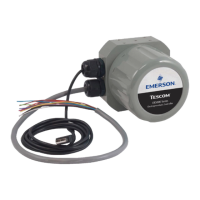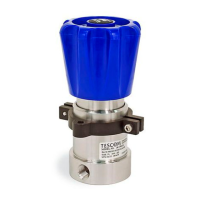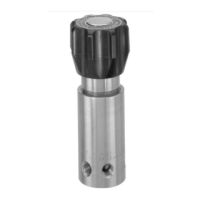ER5000 —
54
Glossary of Terms
Droop
The Outlet Pressure change (offset) which occurs as ow rate
increases and which causes outlet pressure to stabilize at a rate
that is slightly offset from the expected Set Pressure under owing
conditions. Caused by variations in the response characteristics of
the mechanical components of regulators at different ow rates.
PID Controllers are often used to eliminate droop.
Flow Capacity (C
v
)
Refer to C
v
.
Flow Rate (Q)
The quantity of uid being passed through a Regulator or valve during
a specied time period. Units of measure include Standard Cubic Feet
per Minute (SCFM), Pounds per minute (lbs/min), Liters per Minute
(L/Mn), Gallons Per Minute (GPM), Grams per Second (g/sec) and
Kilograms per Hour (Kg/hr).
Loading Element (Loading Force)
One of the three basic elements of a Regulator. The external
force, such as the Pilot Pressure from a PID Controller or the
downward pressure of a knob-activated spring, that acts on the
Sensing Element and causes the Control Element to respond
by opening or closing the main valve. The three common types
of loading elements are Spring Loaded, Dome Loaded and Air
Actuated. The ER5000 can be used with either dome loaded or air
actuated regulators.
Lock-up
The Outlet Pressure rise above setpoint pressure as the ow is
decreased to zero.
Regulators respond to a sudden increase in downstream pressure
by closing the main valve. There is, however, a slight lag in
achieving a completely tight seal of the valve. This can be caused
by the mechanical response time of the valve or because some
extra pressure is required to force the seat into the sealing surface
enough to make the seal 100% tight. Good regulator design aims
to minimize lock-up.
In most applications, a PID Controller will automatically correct
the small pressure rise that is due to lock-up.

